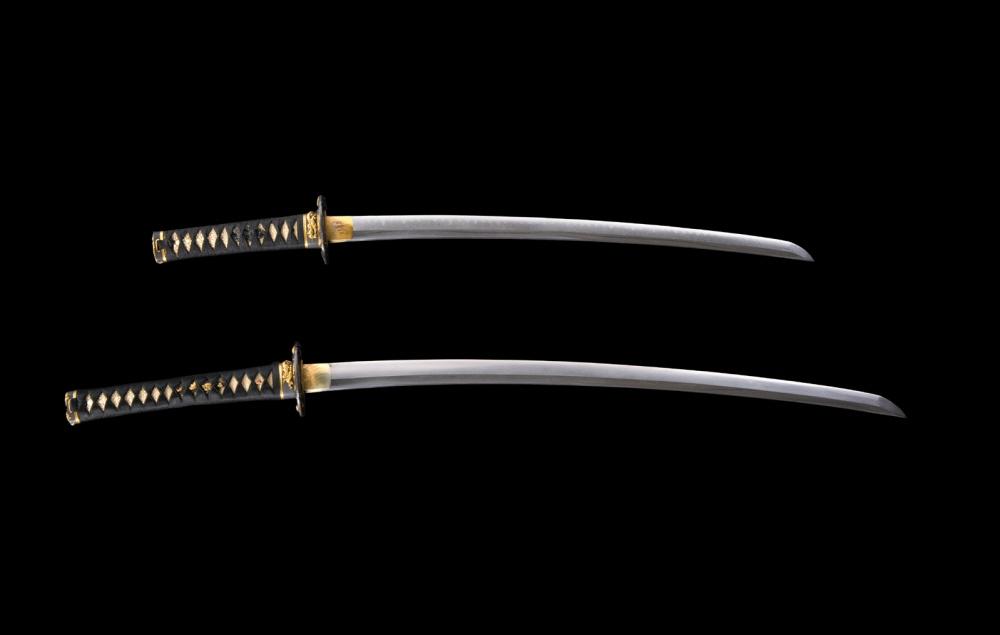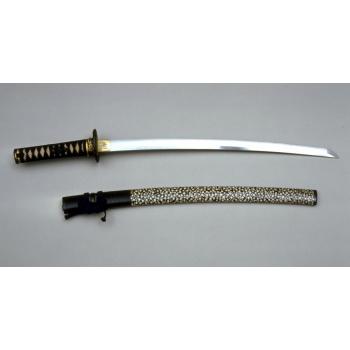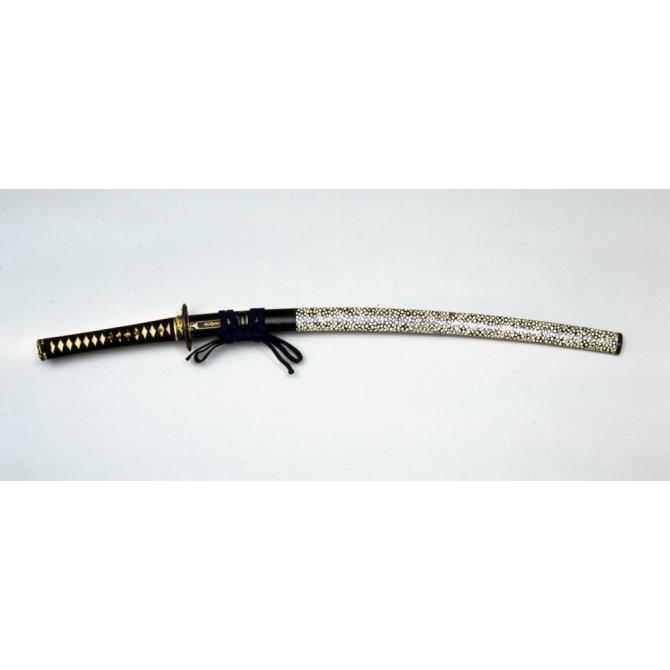Activity
Japanese Swords, Trade, and Cultural Exchange
Objective: To use reading, discussion, and visual thinking strategies to explore the role played by swords in Japanese trade and cultural exchange during the Medieval era.
Author: John Muller, UCBHSSP.

MATERIALS
Museum Artifact:
Unknown craftsman. Short sword (wakizashi) and Long sword (katana) with blade mountings. Japan, Muromachi period (1333–1573), forged and tempered steel, sharkskin, black lacquer, gold on bronze. From the Avery Brundage Collection, Asian Art Museum of San Francisco.
Sources:
Text: “Trade in pre-modern Japan,” Andrea Horbinski (UC Berkeley: 2017), adapted from Charlotte von Verschuer, Across the Perilous Sea (2006).
Table: “Exports from Japan to China in 1453,” adapted from Charlotte von Verschuer, Across the Perilous Sea (2006).
Text and Images: Chaddha, Rima and Audrey Resutek. “Making a Masterpiece.” Secrets of the Samurai Sword. NOVA. 2007. URL: http://www.pbs.org/wgbh/nova/samurai/swor-nf.html
Text: From “Samurai Martial Culture and Their Valued Sword.” Japanese Sword Society of Hawaii. 2011.
URL: http://jssh.org/samuraiculture.html
Text and Images: Martin, Paul. “Japanese Sword Fittings Showcase the Beauty of Impermanence.” Japan Forward. 23 Sept. 2017. URL: https://japan-forward.com/japanese-swords-fittings-showcase-the-beauty-of-impermanence/
Text and Images: “Japanese Sword: How to Know if a Tsuka Is good or bad.” Tozando. 30 May, 2017. Accessed 26 March, 2018.
URL: https://weblog.tozando.com/japanese-sword-how-to-know-if-a-tsuka-is-good-or-bad/
PROCEDURE
Jigsaw Activity: What role did swords play in Medieval Japanese trade and cultural exchange?
Step 1: Divide class into 4 “Expert Groups:”
- The History of Japanese Trade
- The Making of Japanese Swords
- The Cultural Significance of Japanese Swords
- The Decoration of Japanese Swords
Note: The groups can do their readings the night before as homework, so you can save time and start the class with the small Expert Group discussions, rather than taking class time to read.
Each “Expert Group” works together to complete their assigned activity handout (see links under “Downloads”).
Step 2: Re-divide the class into mixed “Jigsaw Groups” that bring together members from each “Expert Group.”
The Jigsaw Groups then work to complete the “Artifact Analysis” activity (linked in “Downloads” section) along with the ensuing Comprehension and Interpretive Questions. The Jigsaw Groups will benefit from the shared knowledge of their “Expert” members. Along with understanding the cultural significance of Japanese swords, students will learn the value of collaboration and interdependence through their groupwork.











